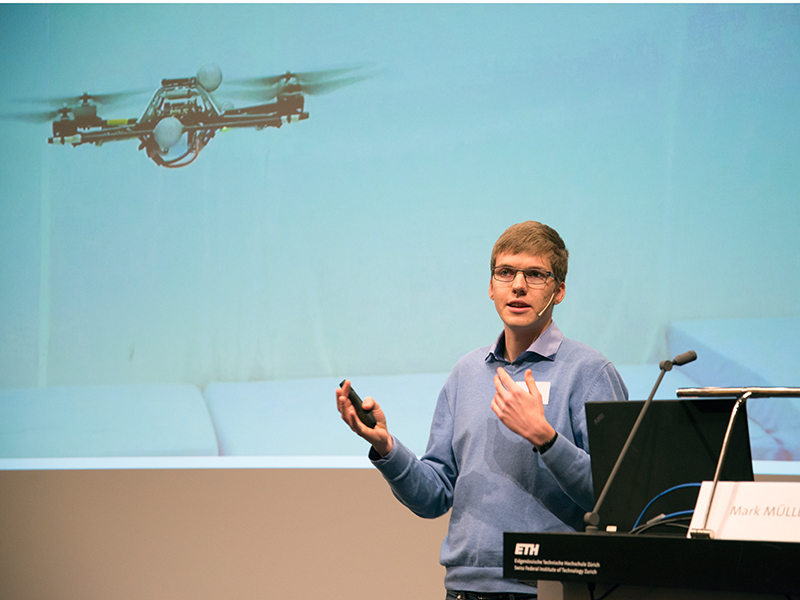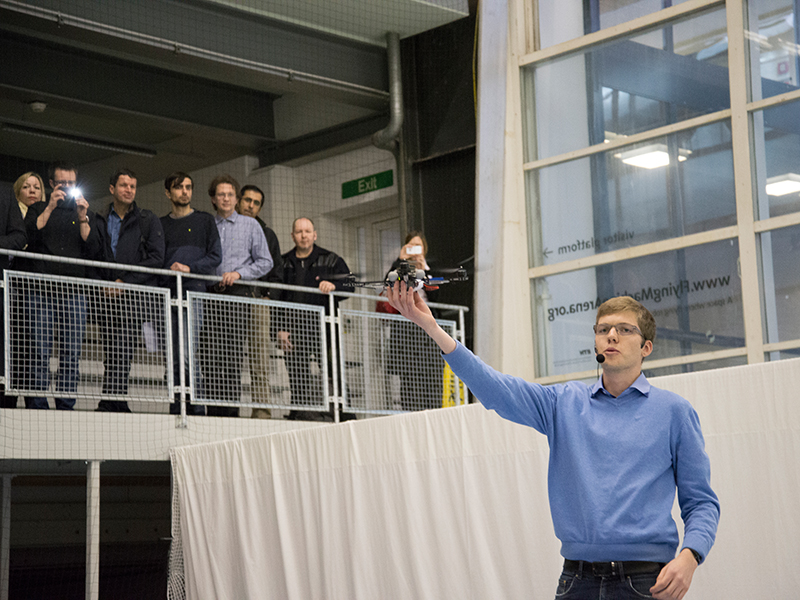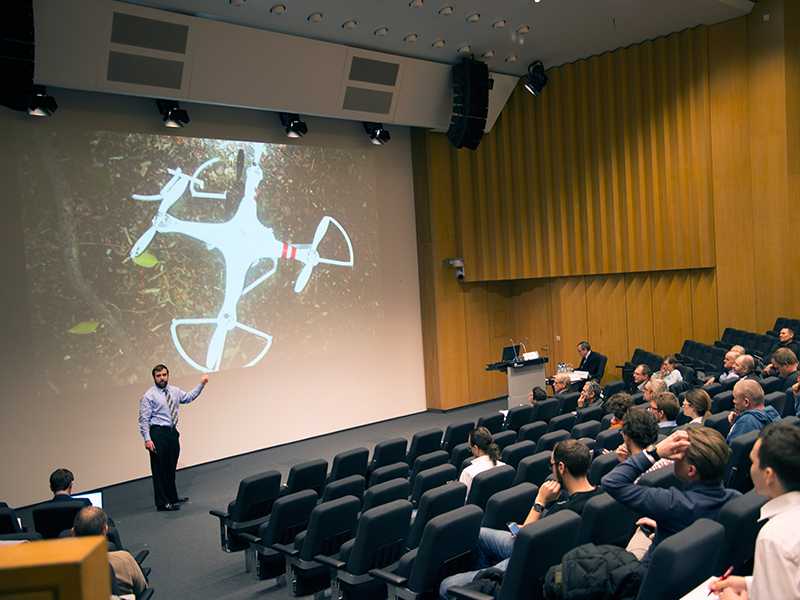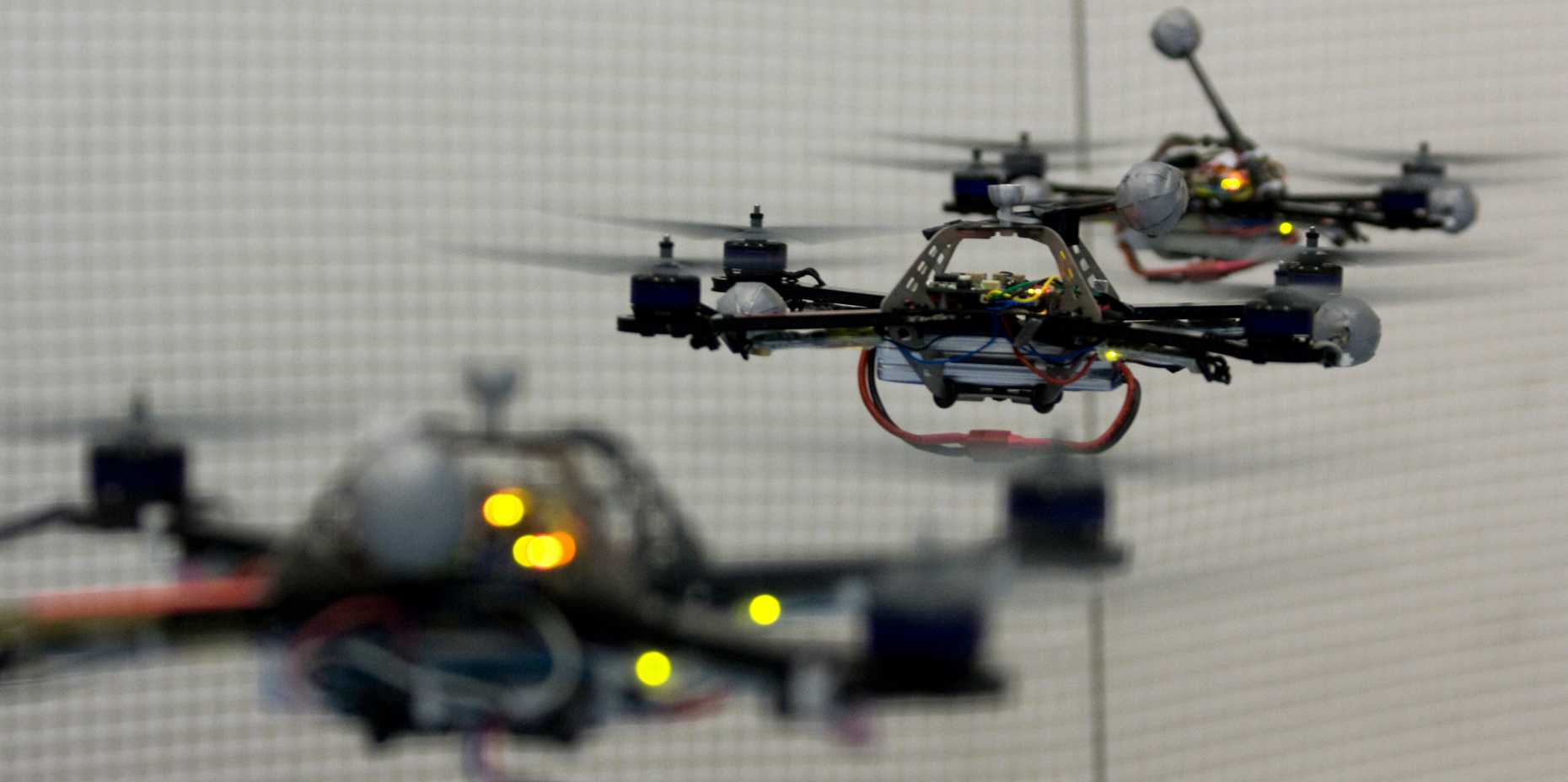Drones and the human factor
Last week's accidental crash landing of a drone at the White House heightened the international debate on the regulation of commercial drones. A conference at ETH Zurich addressed the fact that drone technology comes with controversial applications.
Last Friday ETH Zurich hosted a one-day conference on “Drones: From Technology to Policy, Security to Ethics”. Among the participants were thought leaders from Switzerland, France, Norway, Australia, and the USA, who shared opposing perspectives of the issues surrounding the widespread use of drones. The conference was organized by the International Relations and Security Network and ETH Global, the ETH Zurich international relations office.
The event provided a forum for passionate discussions: As engineers, humanitarians, ecologists, political scientists, business leaders, and even a former US Army Ranger shared their views on the application of drone technology, a common and connecting thread emerged – fear. We are not afraid of drones, but of the possibility that they may be used for sinister purposes. Jean-Baptiste Jeangène Vilmer from the Paris Institute of Political Studies tempered the discussion by asking, “Are drones really the issue?” In fact, the real problem does not lie in the advances in drone technology, but rather in the human factors involved. The fundamental question is whether or not we choose to employ drone technology for the benefit or the detriment of mankind. Vilmer focused on the legal and ethical aspects of drones used in armed conflict.
Martian Inspiration
Paradoxically, it was not the hostility of mankind, but the hostile environment on Mars that inspired one of the projects presented at the conference. With its low density atmosphere the red planet inspired Roland Siegwart of ETH Zurich’s Institute for Robotics and Intelligent Systems towards Atlantik-Solar – a long range solar-powered aircraft. Siegwart and his team of researchers develop fixed-wing solar airplanes and blimps for long duration flights. The Martian atmosphere requires a delicate balance between structural mass (solar cells, batteries, and air frame) and power (aerodynamic conditions or lift force). For Siegwart’s team, these complex conditions posed the guide rails for the development of Atlantik-Solar. Such flying robots, Siegwart’s preferred terminology, are designed to survey and collect data for knowledge assessment - on earth they are used to assess the status of natural disasters and forest fires.
Siegwart’s team works closely with ETH Zurich’s Institute for Dynamic Systems and Control to improve and create estimation techniques that will provide more reliable, redundant, and robust systems. These will hopefully allow for longer flight duration, collision avoidance, and new algorithms that improve simultaneous localization and mapping.
Child’s Play?
While Atlantik-Solar and other ETH Zurich drone technology is intended to benefit mankind, "What happens when such technology finds its way into the hands of the general public or unscrupulous consumers?" According to a recent report in the business magazine external pageFortunecall_made, “The global market for nonmilitary drones has already ballooned into a 2.5 billion US dollar industry, one that’s growing 15 to 20 percent annually.”
When it comes to drones, we are facing a lawless state – a proverbial "wild west" where technology seems to out-pace regulation. The drone that crashed onto the White House lawn was flown in a highly regulated and restricted airspace; however, standard aviation safety regulations that are designed to protect people, property, and other aircraft from collision may not be enough for drones. Temporary airspace restrictions change from day-to-day, so one can hardly expect an unlicensed child or hobbyist launching a “toy” drone from the back garden to keep up-to-date. It is also doubtful that such regulations will protect privacy.
A Matter of Perception
When it comes to drone regulation, Paul Scharre of the Center for a New American Security asserts that, “It is a matter of perception.” Scharre compared the differing regulations that countries have towards manned versus unmanned surveillance aircraft. While both carry out a similar mission, most government officials would be more inclined to shoot down an unmanned drone than they would a manned surveillance aircraft, the response to the latter being perceived as an act of war. The value we place historically and culturally on human life and property influences our perceptions of drones and ultimately our regulatory statutes governing their use.
Kristin Bergtora Sandvik of the Peace Research Institute Oslo focused on the use of drones as surveillance tools in humanitarian conflicts. Drones, equipped with high-resolution cameras used for facial recognition in public spaces and microphones used to eavesdrop on private conversations represent a perceived violation of our human rights. Lian Pin Koh, formerly a researcher at ETH Zurich, now at the University of Adelaide has a differing perception. He uses similarly equipped drones to survey wildlife, to photograph, and listen in on animals in unreachable habitats. Thermal imaging and high-resolution cameras help conservationists to patrol vast amounts of land and combat poaching of protected species. Ecologists and conservationists perceive drone technology as an invaluable tool.
While there are still more questions than answers, one thing is clear: Drones, unmanned aerial vehicles, and flying robots are quickly becoming part of our everyday lives and how we choose to use and to regulate this new technology reflects our culture, values, and perceptions.
Drone conference at ETH Zurich
-

Mark Mueller is presenting latest results in quadrocopter research. (Photo: ETH Zurich) -

Live demonstration of a quadrocopter's abilities at the Flying Machine Arena of ETH Zurich. (Photo: ETH Zurich) -

All about drones at ETH Zurich. (Photo: ETH Zurich)

